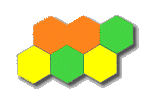
Some Current Work at Terra Cognita
AAGRUUK is a collaboration of the Hawai'i Mapping Research Group
(University of Hawai'i SOEST) with OSU Geosciences via Davey Jones Locker and
Terra Cognita. It is funded by the NSF Office of Polar Programs.
For researchers wishing to access arctic data, AAGRUUK is being developed
to provide: (1) rapid access to raw and processed marine geology and
geophysics data, especially data that presently are not supported at
traditional data repositories such as the National Geophysical Data Center
(e.g., SCICEX sidescan and phase-difference bathymetry, USCGC Healy SB2112
amplitude and backscatter data); (2) access to metadata, contact and
reference information; (3) establish standards for data archival,
documentation and presentation; (4) promote collaborative research and
multidisciplinary studies, thereby fostering new scientific insights.
Minnesota MapServer, Storage Resource Broker, and SIOExplorer DIGIARCH
are some of the approaches being employed. Aagruuk is also the "morning star"
of the Inupiat people, rising above the horizon each December to signal
the end of the long winter night.
The development of innovations in the cataloging and distribution
of place-based (geospatial) environmental data of Oregon, along
with education and outreach throughout the state on how best to
incorporate various data sets, images, and geospatial tools into
classroom teaching and environmental activism. Our new catalogue
will have innovative features such as authentication, platform
services, access control, and the ability to manage different web
services for data flow, backup, load balancing, etc. Planned
innovation outcomes include a main metadata and data catalogue
incorporating statewide, federal, and library metadata standards; a
backend framework to link the catalog to actual data sets or web links
that lead to external data sets; a web portal of data (with accompanying
tools, and services); training workshops for faculty, agencies and
non-governmental organizations; and training sessions and educational modules
for K-12 teachers and the general public
(GIS Day).
Virtual Oregon is a collaboration between the OSU Valley Library, the
Department of Geosciences,
the College of Forestry, and the
Northwest
Alliance for Computational Science and Engineering (NACSE).
To aid in the assessment of the process of water conflict prevention and
resolution, over the years Dr. Aaron Wolfe
and his students have developed the
Transboundary Freshwater Dispute Database, a project of the
Department of
Geosciences, in collaboration with the NACSE. In this database,
biophysical, socioeconomic, and geopolitical data relating to the
world's international river basins are accessible and searchable through
spatial and tabular formats. Spatial data, searchable at the international
river basin and/or country scale, include climate, discharge, runoff,
land cover, dam density, irrigation and population.
Graduate students of
Dr. Dawn Wright are developing classifications of
the benthic (ocean floor) habitats around American Samoa. To date,
multibeam bathymetry and backscatter surveys have been completed for six
areas around the main island of Tutuila. The benthic habitat classifications
of these areas will be incorporated in to a web-based GIS for the coral
reef resources in American Samoa, including
Fagatele Bay National Marine Sanctuary and the National Park of American Samoa.
The site will have both an English interface and a Samoan interface.
Photos from the National Park of American Samoa and the Manu'a
Islands of American Samoa.
The Oregon Biodiversity Analysis Project, sponsored by the
Biodiversity Research Consortium examines species diversity for the state of
Oregon using a hexagonal grid system. The set coverages and integer programming
algorithms provide a sequence of locations that maximize the number of species
classes represented at each step. Richness maps cover class diversity;
terrestrial vertebrate diversity; rare, threatened and endangered species
diversity; and vegetation cover diversity.
The Global Grid Project, sponsored by the US EPA, addresses improved
cartographic methods for sampling and analyzing environmental phenomena across
the globe. The project is a study of the performance of alternative ways to
partition the globe into sample units. The current work looks at the
icosahedron the regular three-dimensional polyhedron with 20 faces, and
measures distortion in shape and area for different types of subdivision.
Ongoing work will look at other polyhedra and implement one or more types
of subdivision to test performance of database and analysis operations.
Gosh, this sounds real interesting, do you have an animated image that
illustrates what you mean? Funny you should ask... .
Note - some browsers are incapable of displaying animated images.
If you cannot view the linked image, or is is not moving, you are probably
not using the latest browser software or have had too much coffee.
This research explores potential effects of alternative land use and management choices on water quality and biodiversity in the United States Corn belt. Designed future scenarios and GIS-based models are used to evaluate the potential impact of different public attitudes and policy choices in agricultural watersheds.
Originally built as a proof-of-concept design for a near-real-time database of all tortoises and freshwater turtles in the world. The National Science Foundation has funded a 2-year effort to build a more extensive version that will support both professional and amateur herpetologists around the globe in documenting the dynamic record of turtle species. Work begins in September 1998 and is based primarily on the efforts of John B. Iverson of Earlham College.
Analysis and Assessment of Impacts on Biodiversity: A Framework for
Environmental Management on DoD Lands within the California Mojave Desert.
Funded by the
Strategic Environmental Research and Development Program (SERDP).





Home | Personnel | Data | Projects | Spinoff







